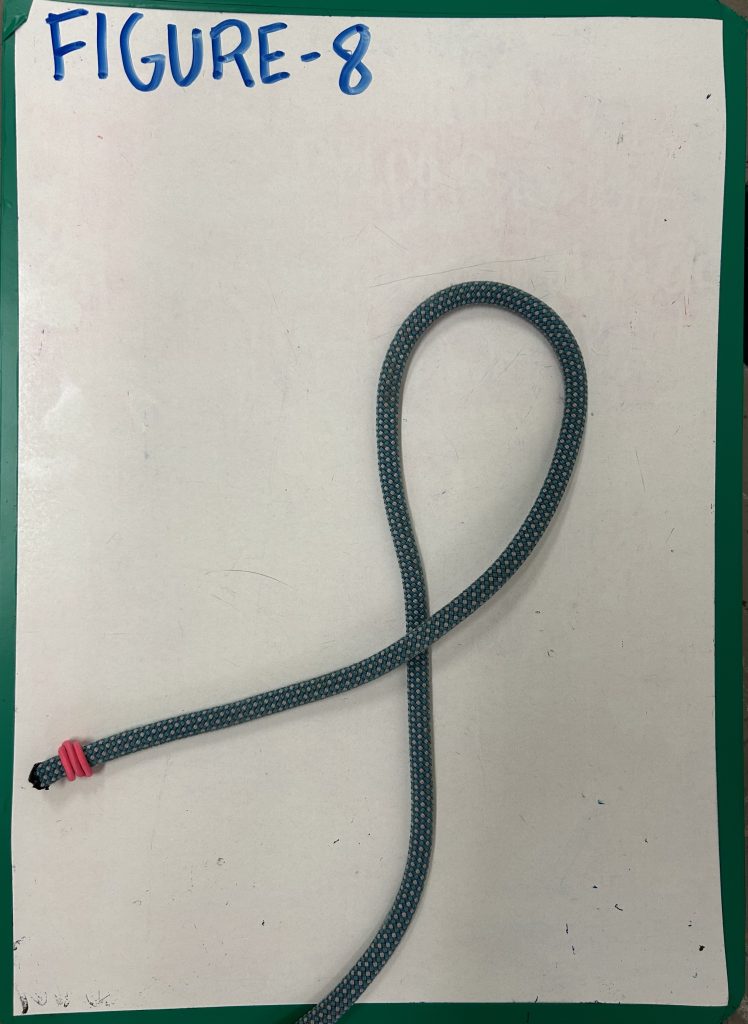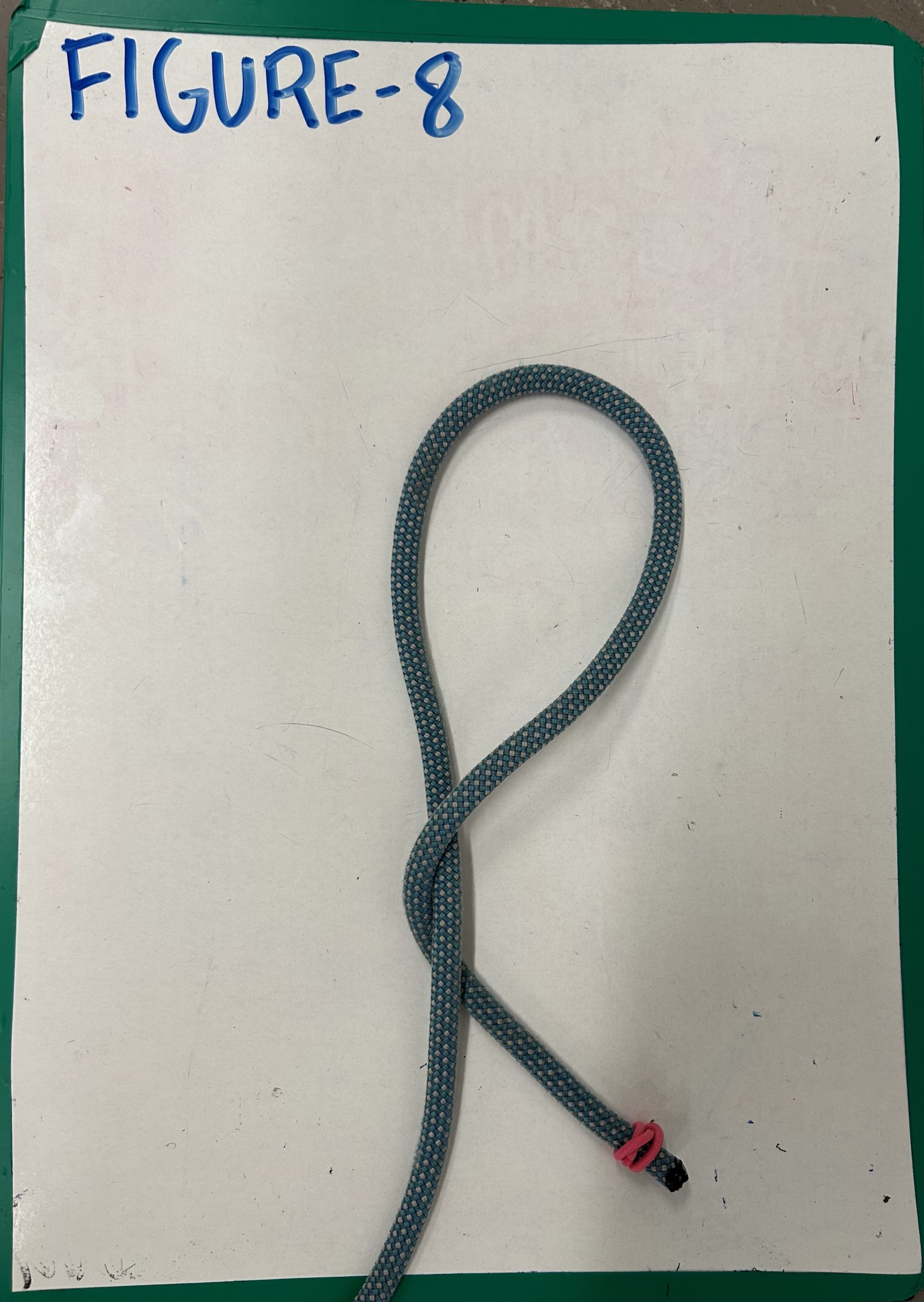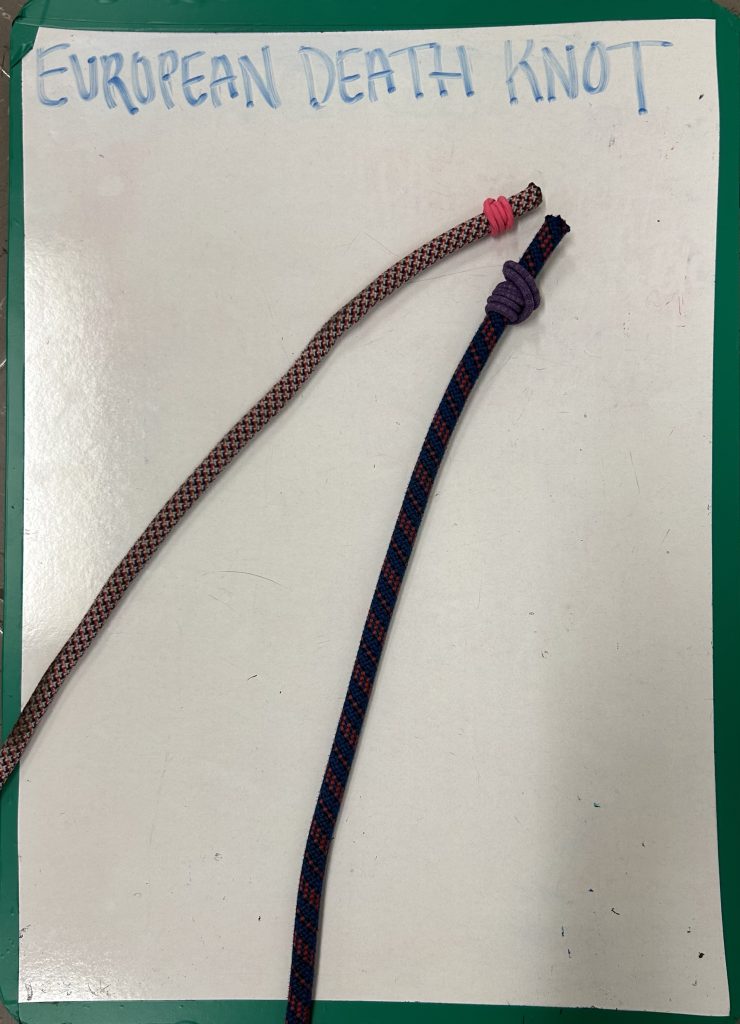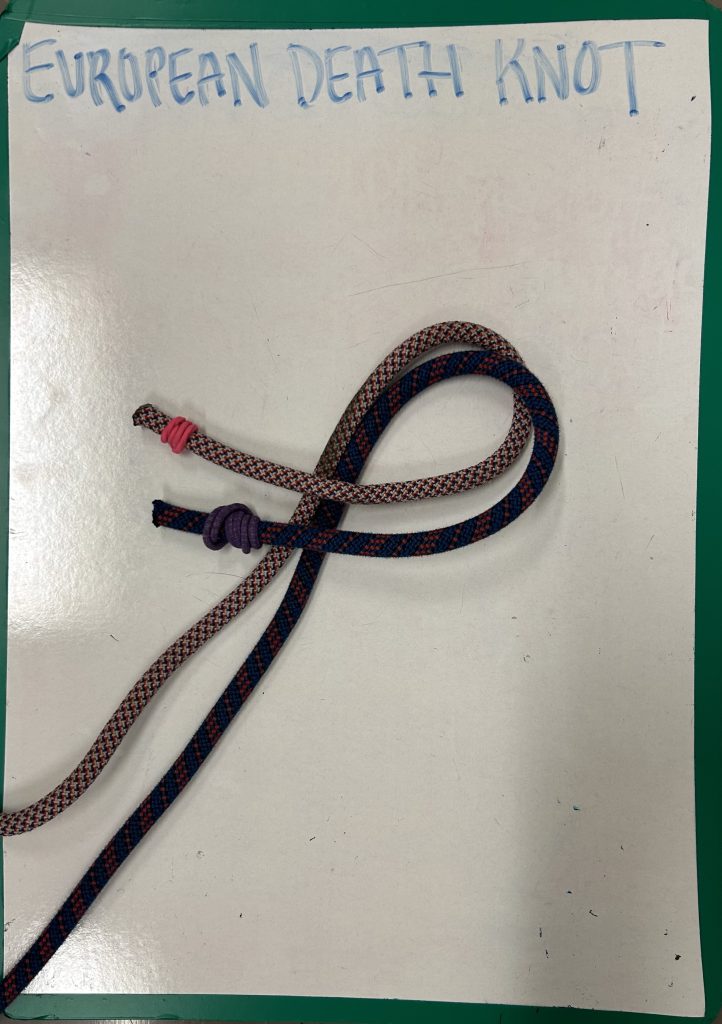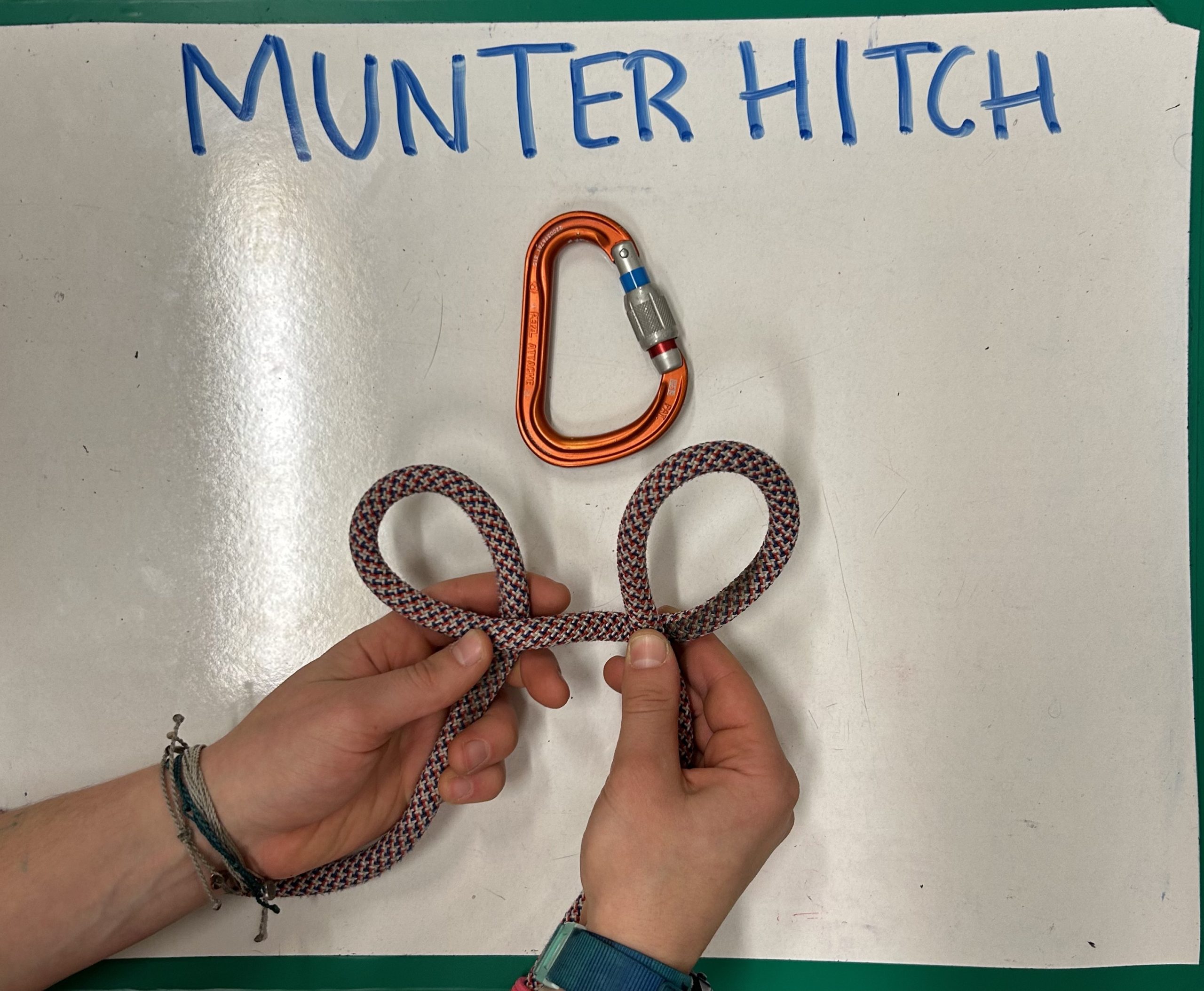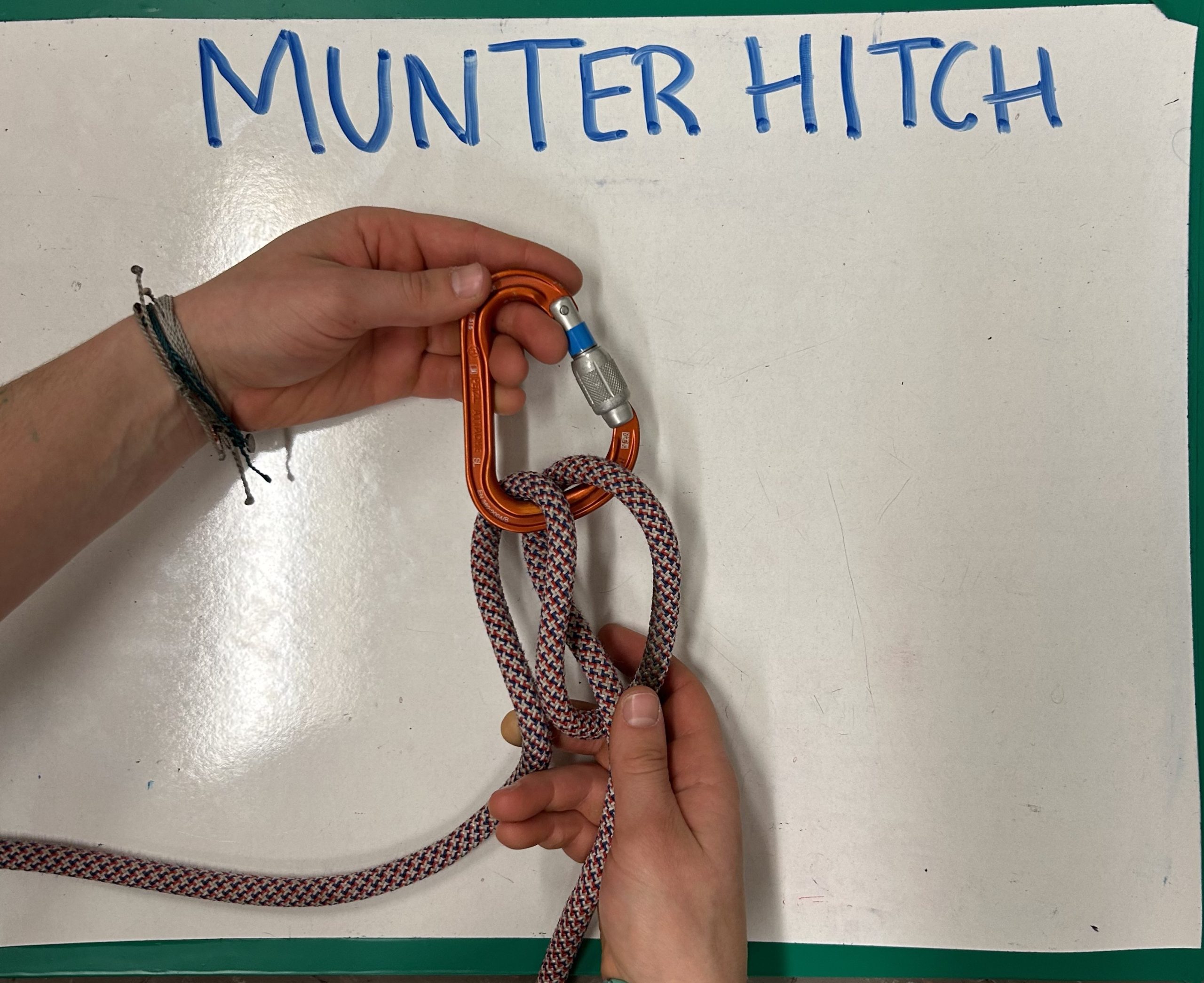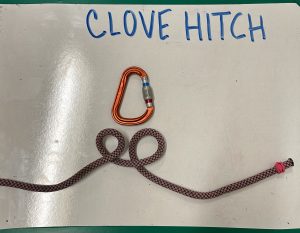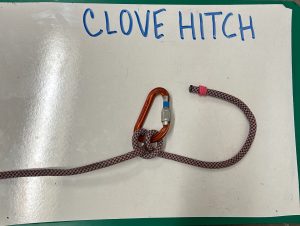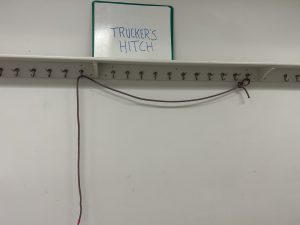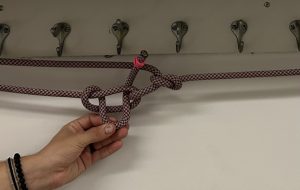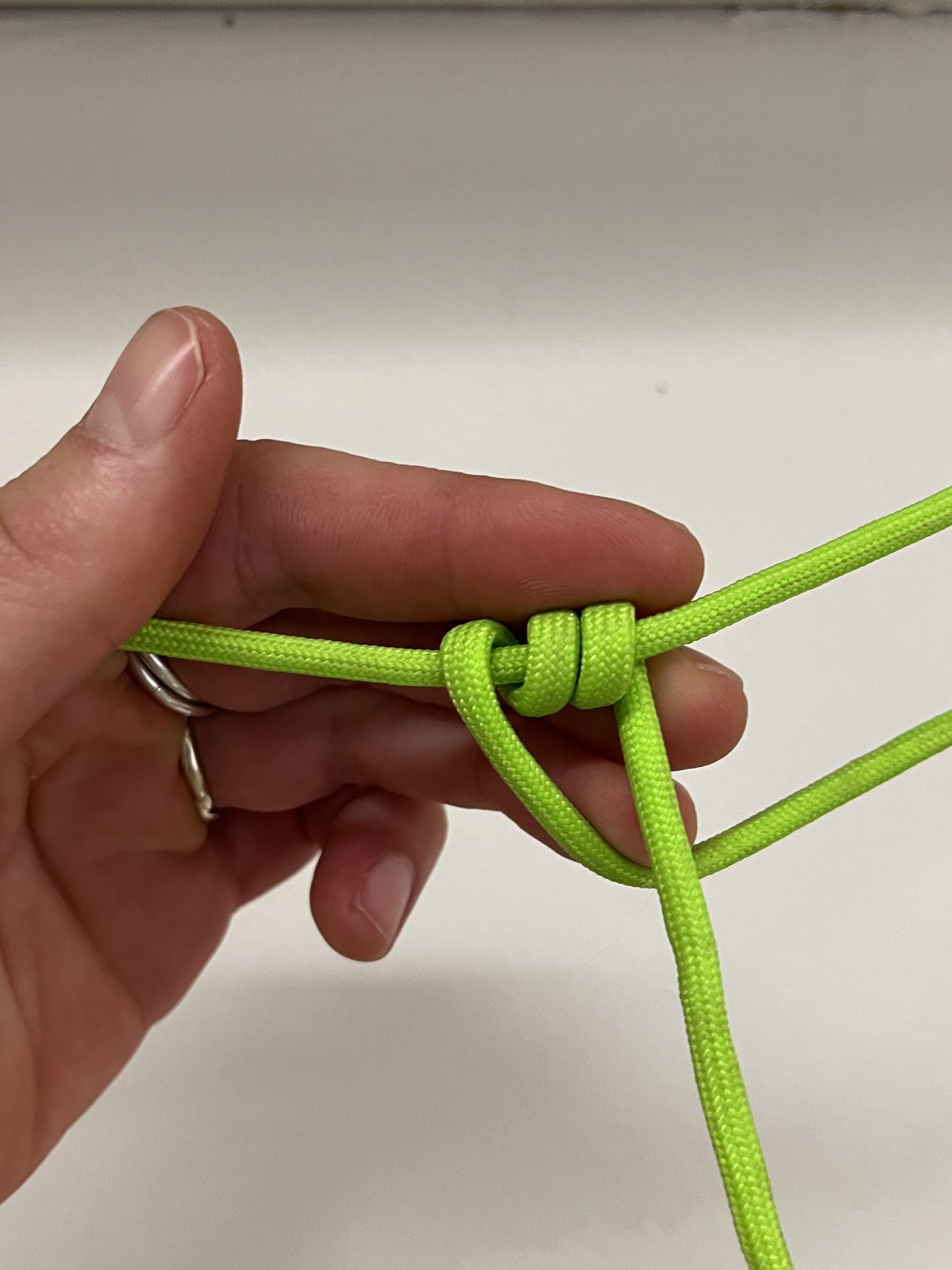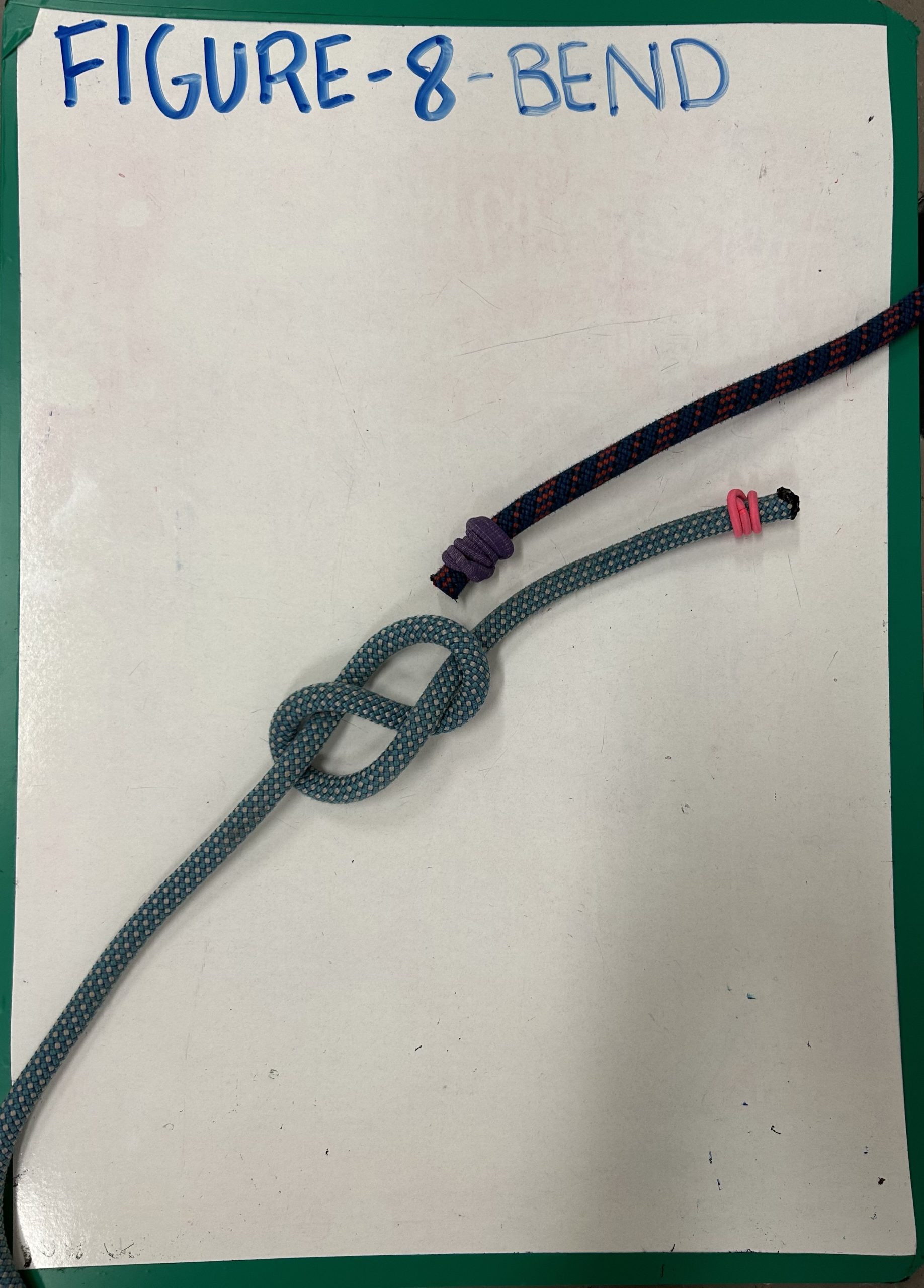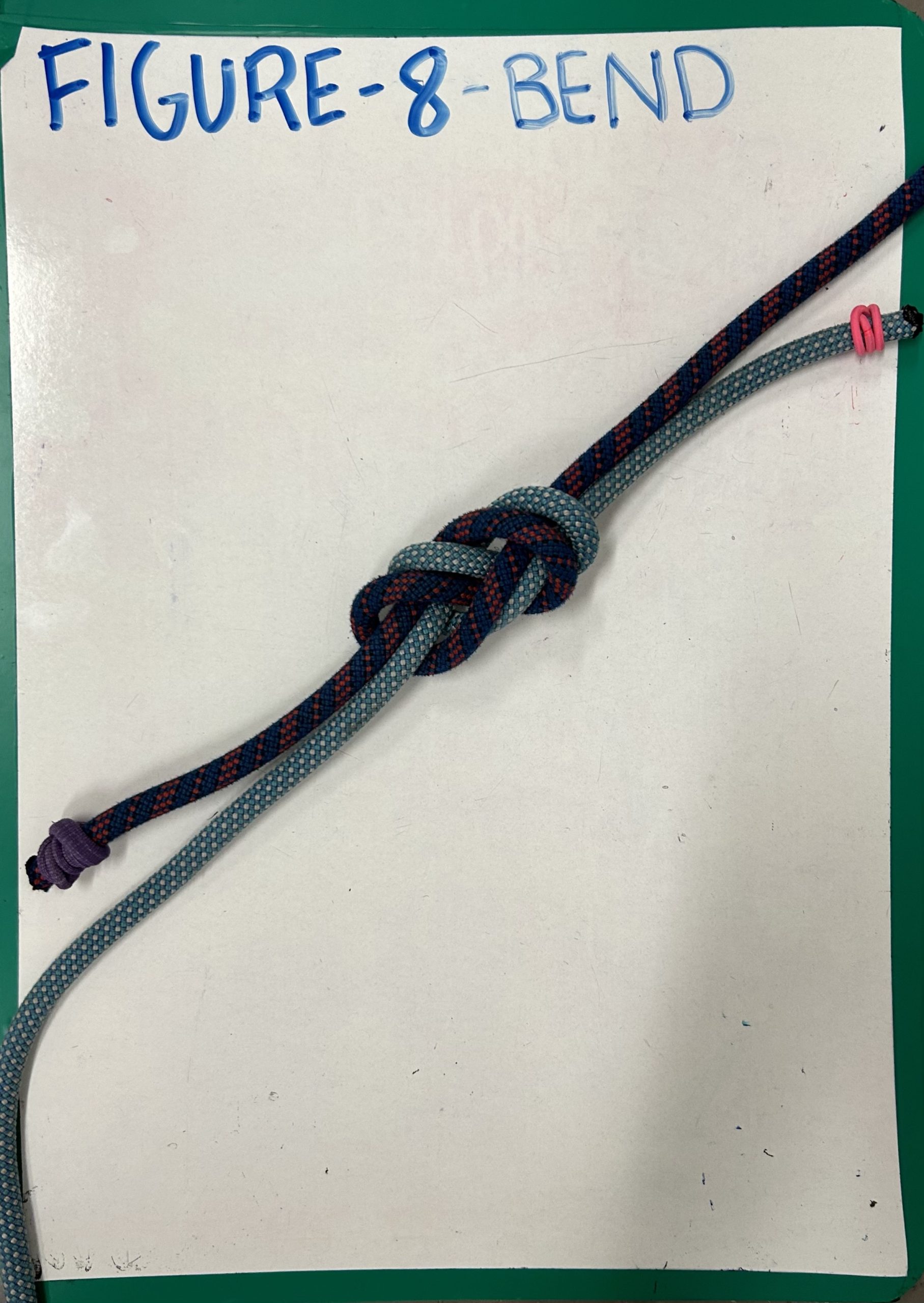Knots!
Knots are an important part of outdoor recreation and safety. This page explains how to tie various knots and what they are used for.

Serves as the basis for a figure-8-follow through, which is used for tying into a climbing rope.
Forms a secure loop in the end piece of rope. Used mainly for sailing for fastening to a mooring or tying rope around a natural anchor (ie. tree or rock). Much easier to tie around something. Does not slip or bind under rope strain: cannot be tied or untied when there is a load on the standing end. Requires a long tail end or stopper knot to prevent slippage.
Fast way to join two ropes together. Easy to tie and rarely gets stuck, must be dressed well in order to work.
Used to rappel and belay without a belay device. Adjustable and acts as friction device to help control descent.
Way to attach rope or cord to pole, ring, or carabiner. Can be weighted and does not slip, used as a temporary hold. Way to attach yourself into a rope system or to secure rope without untying.
Way to secure loads or tarps, adjustable. Can be used to secure boats to a trailer, tie down tarps and tents etc.
Mainly used for securing tent lines. Adjustable and can slide, without completely undoing the hitch (unlike the trucker’s hitch).
Stopper knot. Way to close a belay system and prevent rope from accidentally being fed through belay device. Friction knot and will self tighten.
Safe and easy way to join two ropes of same thickness together.


